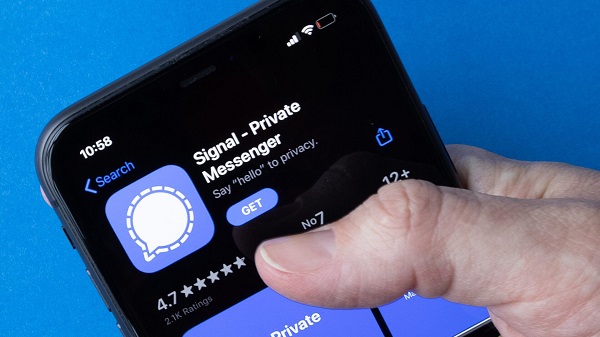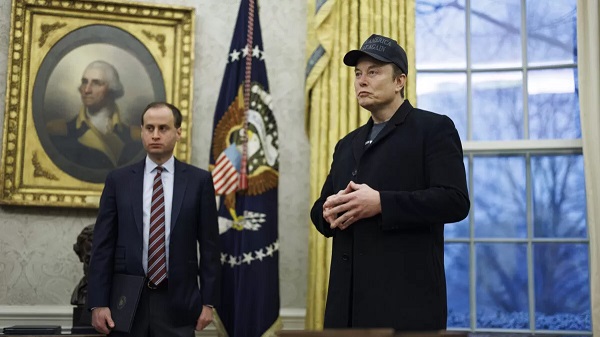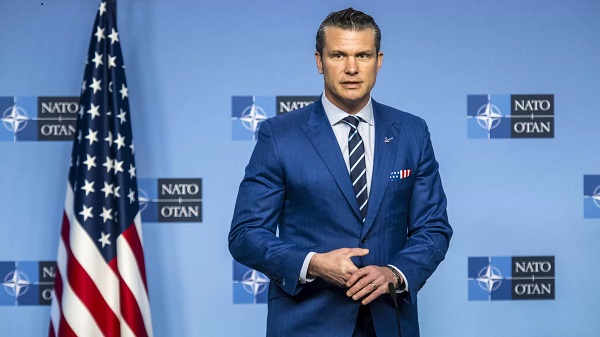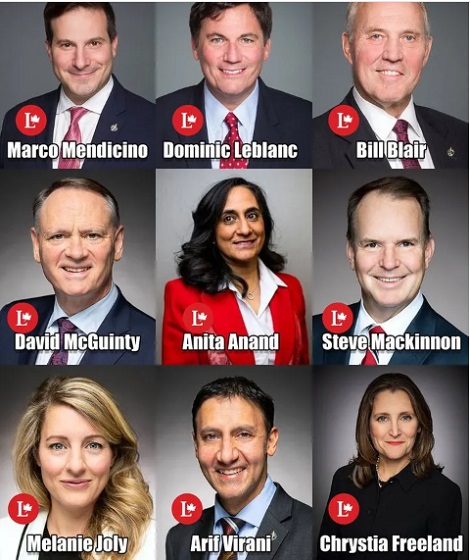J.D. Tuccille
Signal Chat Controversy Is an Endorsement of Encryption Software

By J.D. Tuccille
Popular encryption apps are probably secure if government officials rely on them.
The drama this week over the Trump administration Signal group chat about a strike on Houthis in Yemen in which The Atlantic Editor in Chief Jeffrey Goldberg was inadvertently included has been popcorn-worthy, if you’re into that sort of thing. But beyond the resultant posturing between screw-up bureaucrats and pompous politicians, we learned something of value from the incident: Government officials use the popular encrypted messaging app because the intelligence community considers it secure. While the political class argues over the details, the rest of us should consider that an endorsement of this technology.
Is It Snoop-Resistant?
Encryption software is widely used by businesspeople, journalists, and regular folks who don’t want to share the details of their lives and their finances with the world. But there’s always been speculation about how secure apps like Signal and Telegram are from government snoops who have the resources of surveillance agencies behind them. Are we just amusing the geeks at the NSA when we say nasty things about them to our colleagues via ProtonMail or WhatsApp?
One indication that private encryption software really is resistant to even sophisticated eavesdropping is the degree to which governments hate it. U.S. federal officials have long pushed for backdoor access to encrypted communications. Apple is currently battling British officials over that government’s requirements that the company compromise the encryption offered to users so that law enforcement can paw through private data. The Signal Foundation—creator of the open-source software at the center of the current controversy—threatened to leave the U.K. in 2023 during an earlier anti-encryption frenzy while Germany-based Tutanota said it would refuse to comply.
But then we got news of a group chat on Signal including such officials as Vice President J.D. Vance, Director of National Intelligence Tulsi Gabbard, Defense Secretary Pete Hegseth, CIA Director John Ratcliffe, National Security Adviser Mike Waltz and, of course, Goldberg as a plus-one. If administration officials including several from the intelligence community are willing to hold a conversation on the app, that’s important added testimony to the security of the software.
Endorsed by the CIA
Even more evidence came courtesy of the March 25 Senate Intelligence Committee Hearing on Worldwide Threats, during which attendees were understandably pressed to explain the incident and the use of Signal.
“One of the first things that happened when I was confirmed as CIA director was Signal was loaded onto my computer at the CIA, as it is for most CIA officers,” Ratcliffe told Sen. Mark Warner (D–Va.). “One of the things that I was briefed on very early, Senator, was by the CIA records management folks about the use of Signal as a permissible work use. It is. That is a practice that preceded the current administration, to the Biden administration.”
Later, in response to Sen. Martin Heinrich (D–N.M.), Ratcliffe added: “Signal is a permissible use, being used by the CIA. It has been approved by the White House for senior officials and recommended by CISA [the Cybersecurity and Infrastructure Security Agency] for high level officials who would be targeted by foreign adversaries to use end-to-end encrypted apps whenever possible, like Signal.”
Whether all popular encryption software is equally secure isn’t clear. But Ratcliffe’s mention that officials are encouraged to use apps “like Signal” suggests it’s not the only one that’s reliable.
Nothing Will Save You From Your Own Carelessness
Of course, Jeffrey Goldberg got access to the hush-hush meeting anyway, but that wasn’t a failure of the software’s encryption. Goldberg was apparently included in the chat accidentally, by the invitation of National Security Advisor Mike Waltz, according to his own embarrassed admission.
“A staffer wasn’t responsible, and I take full responsibility,” Waltz told Fox News’s Laura Ingraham. “I built the group. My job is to make sure everything is coordinated.”
Waltz claimed he had Goldberg’s phone number in his contacts under the name of a government official who he intended to add to the meeting. Basically, the fault lies with Waltz’ mastery of contact lists and how to make sure you share confidential info only with those you want to have it.
“There’s no encryption software in the world that is going to prevent you from making a blunder if you directly send classified information to a journalist accidentally,” Northeastern University professor Ryan Ellis, who researches cybersecurity among other topics, commented on the matter.
Ellis and his Northeastern colleagues emphasize that Signal and government-developed communications platforms don’t differ regarding the security they offer for data but in “safeguards to prevent the sharing of information with individuals without the proper clearance.” Presumably, government software doesn’t draw on generic contact lists. That means there’s less opportunity for officials to unintentionally share secrets—or dick pics—with journalists and foreign operatives.
Popular With Everybody (Just Watch That Contact List)
That said, commercial encryption software is as popular among government officials as it is with the public. “The AP found accounts for state, local and federal officials in nearly every state, including many legislators and their staff, but also staff for governors, state attorneys general, education departments and school board members,” the news service reported last week in a piece that emphasized transparency concerns around the use of encryption by government officials. Like Ratcliffe, the A.P. noted that CISA “has recommended that ‘highly valued targets’—senior officials who handle sensitive information—use encryption apps for confidential communications.”
After news of the administration group-chat breach broke, Frederick Scholl, a professor of cybersecurity at Quinnipiac University, discussed several apps that people can use to keep their communications secure “including Briar, Session, Sig
That’s in addition to others including Meta’s WhatsApp. And encrypted RCS is replacing old-school SMS for basic text messages, though the transition isn’t complete. Even better, the new standard is supported by both Apple and Google so that encryption will work in conversations between Android and iPhone platforms.
Nothing is completely safe, of course. People developing security are in a constant race with those trying to compromise it. And, like Mike Waltz has discovered, nothing can save you from embarrassment if you invite the wrong person to the chat.
|
|||||||||||||||||||||||||||||||||||||||||||||||
|
|||||||||||||||||||||||||||||||||||||||||||||||
Business
Americans Say Government Is Corrupt and Inefficient but Are Lukewarm About DOGE

Democrats seem willing to tolerate a lot to get a larger government, but Republicans aren’t much better
Americans think government is wasteful when it’s not outright fraudulent and abusive. That should create a welcoming environment for the Department of Government Efficiency (DOGE) and its mission to cut fat out of federal agencies on the way to (hopefully) reducing the state and balancing the budget. But support for DOGE is lukewarm. Unsurprisingly in these politically fractured times, cost-cutting efforts are a lot more popular with Republicans than Democrats, but polling suggests the division isn’t just one of partisanship. The DOGE is running up against fundamental disagreements over the role of government and the people who staff it—and the price people are willing to pay for a less-obnoxious government.
Corrupt and Inefficient Government, but Iffy Support for DOGE
Last year, Pew Research polling found that 56 percent of Americans say government is “almost always wasteful and inefficient.” The Babbie Centre at Chapman University reported that “nearly 2/3 of Americans fear that our government is run by corrupt officials.” And last month, A.P.-NORC researchers found 70 percent of Americans believe corruption is a major problem in the federal government, 65 percent say the same of inefficiency, and 59 percent see red tape—including regulations and bureaucracy—as a major problem.
Yet DOGE draws just a 39 percent “favorable” rating in the latest The Economist/YouGov poll, a bare three points ahead of “unfavorable” at 36 percent (25 percent picked “don’t know”). A poll this month from Trafalgar Group found 49 percent approving of the cost-cutting efforts of DOGE and Elon Musk, with 44 percent disapproving (7 percent were undecided). That’s more support than opposition in both cases, but you’d expect greater enthusiasm from a public that overwhelmingly considers government to be corrupt and wasteful (with plenty of evidence to support that position).
Part of the explanation, of course, is partisanship. Anything done by officials from one of the major parties is bound to be booed by the opposition, no matter what. As Gallup’s Jeffrey M. Jones pointed out in 2022, “generally speaking, Republicans and Democrats are more inclined to say the government has too much power when the president is from the other party, and less inclined when a president from their own party is in the White House.” That tribalism likely extends to cutting government as well, even if the cuts apply to agencies controlled for the moment by political enemies. Sure enough, both Trafalgar and The Economist/YouGov found far greater support for DOGE among Republicans than among Democrats (independents split the difference).
Democrats Want More Government, Flaws and All
But there are also real differences in attitudes toward the role of the state. The same Pew poll that reported widespread belief in the wastefulness and inefficiency of government also found that 49 percent of respondents “would prefer a smaller government providing fewer services” while 48 percent “would rather have a bigger government providing more services.” And the partisan divide here isn’t just tribal, it’s ideological. Despite fluctuations depending on who is in power, Republicans have overwhelmingly favored a smaller government providing fewer services since polling on the issue began in 1976 (support for bigger government peaked among them at about one-third in 1988 and 2004). Democratic support for larger, more active government grew from 49 percent in 1976 to 74 percent now.
Democrats in the A.P.-NORC poll were just slightly kinder than Republicans in their opinions on government corruption, efficiency, and red tape; majorities agree the federal government is corrupt and inefficient, while a 47 percent plurality says that red tape is a major problem. Given the overwhelming belief that government is corrupt and wasteful, but iffy support for DOGE, it’s fair to conclude that at least some Democrats are willing to put up with those concerns as the price of a larger state.
Partisan disagreement over the role of government also applies to trust in the people who staff the federal bureaucracy. These are the people the Trump administration offered buyouts and seeks to reduce in number, much like the Clinton administration did in the 1990s. Support for reducing the federal workforce depends, to a large extent, on agreement that those workers are part of the problem—or at least that we’d be better off with fewer of them. That’s not a universal opinion.
“Just 38% of Republicans and Republican-leaning independents express a great deal or a fair amount of confidence in federal career employees,” Pew Research noted last week. That’s down 10 points from 2018. “In contrast, 72% of Democrats and Democratic leaners say they have confidence in career government employees – 7 points higher than in 2022, but on par with 2018 levels.”
So, if we’re to believe what members of the public tell researchers, majorities of Americans across partisan divides think the federal government is corrupt and inefficient. But a fair number of those who hold this position—Democrats, in particular—are confident that the people employed by the federal government aren’t responsible for that corruption and efficiency. Those problems appear from somewhere, perhaps as a miasma emanating from the swamp that D.C. was in years past. Also, many of those concerned that corruption and inefficiency plague the government are willing to put up with those handicaps so that the corrupt and inefficient government can play a larger role in our lives.
Republicans Also Want Their Expensive Goodies
Of course, consistency and logic aren’t necessarily common features of public opinion. As I’ve noted before, Republicans and Democrats may disagree when it comes to broad philosophical statements about the size and role of government, but when it comes to specifics, there’s more that unites them than divides them. Majorities of partisans of both parties as well as of independents want more federal spending on Social Security, Education, and Medicare, according to A.P.-NORC. A majority of Democrats also want more to be spent on Medicaid and assistance to the poor, while a majority of Republicans similarly want more dedicated to border security and the military.
Social Security is almost a quarter of federal spending all by itself, while Medicare, Medicaid, and other health care are slightly more, by the Cato Institute’s reckoning. National defense is about 13 percent, as is income security, with interest on federal debt right behind. DOGE faces quite an uphill battle to succeed in its mission to slash the size and cost of federal government.
DOGE faces obstacles from Democrats who recognize that the government is corrupt and inefficient but want more of it anyway. It also faces a challenge in Republicans and independents who say they want less government but don’t want to surrender their favorite boondoggles.
Americans are lukewarm about DOGE because they’re torn about its mission. Sure, they have a low opinion of the federal government, but they might be willing to put up with its deep flaws so long as it delivers their goodies.
|
|
|
conflict
U.S. Tells Europe To Handle Its Own Defense

The U.S. is no longer willing to subsidize prosperous countries that won’t defend themselves.
The Trump administration’s foreign policy gambits can be baffling: Why rename the Gulf of Mexico? What is this fixation on annexing Greenland? Does anybody really want to find out what happens if we add Canadians to the U.S. Senate? But the president is right that allies have been allowed to shift the costs of their defense to the United States for decades, and they’ve relied on the U.S. to resolve what are largely European problems. With the U.S. government spending far beyond its means, it’s time for our NATO allies to step up, as U.S. Defense Secretary Pete Hegseth recently suggested.
Blunt Word for Europe
“The United States remains committed to the NATO alliance and to the defense partnership with Europe, full stop,” Hegseth, who served as an infantry officer in Afghanistan and Iraq before taking high-profile roles with Fox News and then with the Trump administration, commented last week at a meeting of the Ukraine Defense Contact Group held in Brussels. “But the United States will no longer tolerate an imbalanced relationship which encourages dependency.”
Hegseth went on to say that any security guarantees negotiated for Ukraine after almost three long years of war between that country and invading Russian forces “must be backed by capable European and non-European troops,” but only “as part of a non-NATO mission….To be clear, as part of any security guarantee, there will not be U.S. troops deployed to Ukraine.”
But what really brought the message home for attendees was when the U.S. defense secretary emphasized that America has security obligations throughout the world, particularly regarding China. That means, with NATO, the U.S. would focus on “empowering Europe to own responsibility for its own security.” To that end, Hegseth urged U.S. allies to exceed the 2-percent-of-GDP target for defense spending set by the alliance—which most fail to meet—and to aim for 5 percent.
Hegseth’s speech threw “the world’s biggest military alliance into disarray,” according to the A.P. But the message wasn’t unanticipated, nor was the reality of competing demands on American resources entirely unappreciated. France’s President Emmanuel Macron quickly called a meeting of European leaders “to discuss European security.” NATO Secretary General Mark Rutte agreed Europe and Canada “have not paid enough over the last 40 years…. The U.S. is rightly asking for a rebalancing of that.”
Poland, which has historical reasons to fears Moscow’s intentions, is already near the 5 percent target for defense. Last March, Poland’s President Andrzej Duda praised the U.S. role in defending Europe and supporting Ukraine, but asked other NATO countries to join his country in building military capability.
Unequal Commitments to Defense
At least since the end of the Cold War, most European countries have skated by on minimal military expenditures, counting on the United States to handle any threats that might emerge. That situation continued even after Russian troops poured into Ukraine.
“The British military—the leading U.S. military ally and Europe’s biggest defense spender—has only around 150 deployable tanks and perhaps a dozen serviceable long-range artillery pieces,” The Wall Street Journal reported in December 2023. “France, the next biggest spender, has fewer than 90 heavy artillery pieces, equivalent to what Russia loses roughly every month on the Ukraine battlefield. Denmark has no heavy artillery, submarines or air-defense systems. Germany’s army has enough ammunition for two days of battle.”
NATO’s last annual report revealed the U.S. represents 53 percent of the GDP of all countries in the alliance. But the U.S. makes 67 percent of alliance defense expenditures. NATO sets a goal for members to spend 2 percent of their GDP on defense. Even with rising tensions, only 11 of the alliance’s 32 members hit that benchmark in that report (the next report should show more meeting the goal).
Among the countries not hitting the 2 percent mark are Canada, France, and Germany—all wealthy countries that could significantly contribute to the alliance’s defense. Germany claims to have hit the 2 percent target in its latest budget. But Canada’s government reportedly told NATO that it “will never” hit the target. Writing about that admission, The Washington Post‘s Amanda Coletta noted that “nearly all of Canada’s 78 Leopard II tanks ‘require extensive maintenance and lack spare parts.'”
In supporting Ukraine, European countries gave somewhat more than the U.S. But Europe emphasized financial and humanitarian aid, so the U.S. has offered slightly more military assistance at €64 billion ($62.1 billion U.S.) compared to Europe’s €62 billion ($65 billion U.S.), according to the Kiel Institute for the World Economy.
The U.S. Can’t Afford To Continue as Europe’s Protector
As Hegseth emphasized in Brussels, the U.S. has security concerns around the world, especially in the Pacific with China, while European worries are more regional. But the U.S. has another big concern: The federal government spends far too much. After entitlements, defense spending is a major recipient of tax dollars—or, more accurately, of money borrowed from the future given the massive deficit. According to the Congressional Budget Office, “the federal budget deficit in fiscal year 2025 is $1.9 trillion. Adjusted to exclude the effects of shifts in the timing of certain payments, the deficit grows to $2.7 trillion by 2035.” Debt will also soar if the gap between spending and receipts continues.
Last year, the Cato Institute broke down federal spending, showing that Medicare, Medicaid, and other health entitlements make up 28 percent of the federal budget, Social Security is 22 percent, defense and income security account for 13 percent each, and net interest on the debt is 11 percent. Everything else makes up the remaining 13 percent. It’s going to be very difficult to balance the federal government’s books without addressing entitlements and defense spending.
Undoubtedly, with the Department of Government Efficiency (DOGE) turning its attention to the Pentagon, loads of waste, fraud, and abuse will be uncovered. But it’s impossible that so much financial mismanagement will be uncovered as to make up for trillions in deficits all by itself. Some priorities will have to be rejiggered to get spending controlled.
So, Hegseth’s blunt reminder to Europeans that their continent is their responsibility to defend is justified. Countries that together almost equal U.S. GDP and are mostly clustered together should be making more serious arrangements for their own defense.
Not all Trump administration pronouncements were so well-considered. The U.S. reportedly plans to meet with Russian envoys to discuss Ukraine’s future—without inviting Ukraine or European allies. That’s presumptuous and runs the risk that Ukraine just won’t stop fighting if it doesn’t like the terms.
In response, Ukraine’s President Volodymyr Zelenskyy called for the creation of an “armed forces of Europe” to defend the continent. French President Macron’s security meeting suggests Europeans are thinking along similar lines.
That could work out for everybody except the Russians. If Europeans assume greater responsibility for defending their continent and for supporting Ukraine, Washington, D.C. would likely be very happy.
|
|
|
-

 Alberta2 days ago
Alberta2 days agoProvince to expand services provided by Alberta Sheriffs: New policing option for municipalities
-

 Bruce Dowbiggin1 day ago
Bruce Dowbiggin1 day agoIs HNIC Ready For The Winnipeg Jets To Be Canada’s Heroes?
-

 2025 Federal Election1 day ago
2025 Federal Election1 day agoCSIS Warned Beijing Would Brand Conservatives as Trumpian. Now Carney’s Campaign Is Doing It.
-

 2025 Federal Election2 days ago
2025 Federal Election2 days agoNo Matter The Winner – My Canada Is Gone
-

 Alberta1 day ago
Alberta1 day agoMade in Alberta! Province makes it easier to support local products with Buy Local program
-

 Health1 day ago
Health1 day agoHorrific and Deadly Effects of Antidepressants
-

 2025 Federal Election1 day ago
2025 Federal Election1 day agoCampaign 2025 : The Liberal Costed Platform – Taxpayer Funded Fiction
-

 2025 Federal Election1 day ago
2025 Federal Election1 day agoA Perfect Storm of Corruption, Foreign Interference, and National Security Failures





